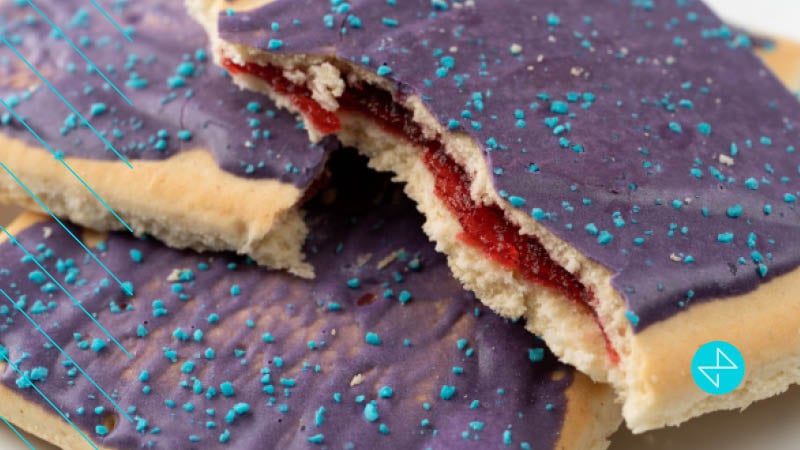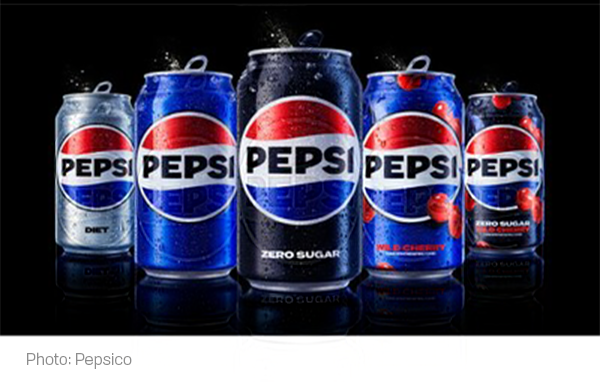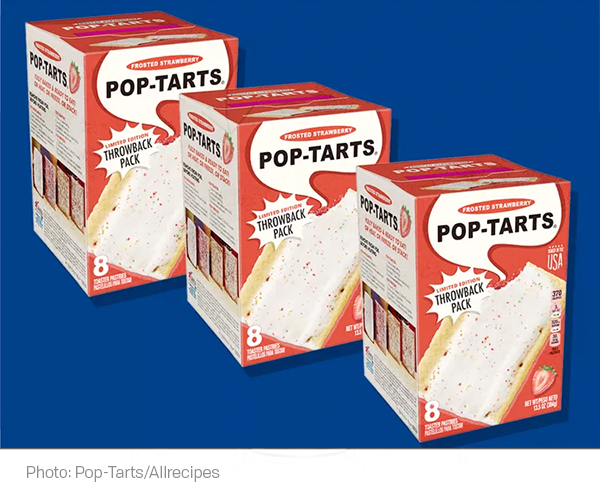
The Power of Nostalgia Marketing Techniques
Discover how CPG nostalgia marketing techniques evoke cherished memories, shape consumer emotions, drive brand loyalty, & influence purchasing decisions.
Remember when all you needed to make your day was finding a Dunkaroos in your lunchbox? Chances are that having one today would evoke that feeling. Nostalgia has that awesome gift. It transports us back to beloved moments and places. Nostalgia also creates an opportunity for marketers to appeal to the desires of their consumers with something as simple as packaging, or reviving an old flavor. It is no coincidence that as the generation who fondly remembers Dunakroos becomes parents, the product made a revival.
What is Nostalgia Marketing and Why it Works
Be it Harry Potter, Pokémon, or even The Brady Bunch, as the years go by, we all develop a certain degree of nostalgia for our younger days. How else do you explain the iconic Brady Bunch house, recently renovated by HGTV, selling for $3.2 million? Aligning marketing strategies with emotion has already proven to be successful, but tapping into fond memories can be an invaluable tactic. From fast food and breakfast cereals to gaming systems and everything in between, smart brands are engaging through retro roots, calling it nostalgia marketing.
Why is Nostalgia So Strong? Throwbacks That Warm the Heart
Brands from all from all industries are tapping into positive cultural memories to fuel modern campaigns. It makes sense. As days get more complicated, it’s nice to find literal comfort food. From retro soda cans to vintage cereal boxes, the visuals alone evoke a wave of nostalgia that piques our interest and sparks our desire to reconnect with these familiar brands. The key driver of these efforts has been the desire to create impactful and memorable ads that break through the noise, regardless of which media channel the advertising is on.
And while nostalgia-centric tactics clearly make an emotional connection it’s not as easy as smacking a retro logo on your product. The key is context, finding a balance between sentimentality while providing something new. A great example is Pokémon GO, which one of my co-workers, one of the most interesting people I know in fact, loves. I can’t say for sure if she was into Pikachu when she was younger, but I do know that she loves the combination of the beloved story with augmented reality. It elicits happiness and exploration while staying true to the brand.
The Nostalgic Flavors of Food & Beverage
The Consumer Packaged Goods (CPG) industry is particularly ripe for nostalgia. Think about your fav snack when coming home from school, or most anticipated meal when visiting your grandparents over the summer. For me, it was a mac and cheese any time. My palette has since refined. I still enjoy mac and cheese, but I’m more discerning about ingredients and sometimes make it plant-based. As the younger self becomes a grown-up, we crave the comforts of the past, of simpler times. So it’s no surprise that in recent years, brands are more frequently embracing nostalgia marketing to captivate target audiences.
Brand Case Study | Pepsi
Pepsi is no stranger to making a splash in the marketing world. Their newest re-brand is an example of the bold moves they make to stay on top. Pepsi took the time to get to know their audience and looked to their consumers for insight. In a brand study, people were asked to draw the Pepsi logo from memory. They found that consumers tended to produce a logo closer to that of the design used from 1987-1997 rather than the one used in the last few decades. Pepsi decided to lean into this knowledge to give its logo the first refresh in 14 years. In an interview with Insider, PepsiCo’s chief design officer, Mauro Porcini, said about the new Pepsi logo, “As a brand that is beloved by many generations, we designed the new logo and visual identity to pay homage to our brand's heritage and look to the future to create something current and undeniably Pepsi.”.
Pepsi is taking this moment even further by using the rebrand as the centerpiece to is 124th anniversary. Starting in August 2023, the brand will kick off its massive 125 days of promotions calendar, that runs through New Year’s Eve. One hundred twenty-five days for 125 years since the invention of Pepsi (originally “Brad’s Drink”) was conceived.
Brand Case Study | Pop Tarts
Pop-Tarts in 2023 came out with a “Limited Edition Throwback Pack” that honors the treat’s 1960’s debut. The throwback Frosted Strawberry Pop=Tarts packing is inspired by the original packaging, but it’s not identical. One of the reasons for this include that FDA requires certain messaging on packaging now like nutrition, ingredients, and allergen information. But the packaging definitely has that retro, mid-century vibe to whet the appetites of consumers, who may be forgot about how much they enjoy the snack.
How to Capture Consumer Sentiments on Different Platforms
Paying attention to media habits of your target audience will certainly help inform where brands should invest their time, money, and attention. Doing so will yield higher results than relying on one form of advertisement. And let's not forget that what is working this month, may not work next month, so keeping a pulse (or talking to a trusted resource) on the value of platforms and mediums is also paramount to success.
Pinpointing consumers of packaged goods using an assortment of insightful segments can be a bit overwhelming. Select from a variety of location and behavioral attributes to target the best audiences for your campaign.
Not sure where to start? Check out our list of tactics to inspire your next marketing campaign. Mix and match into an omnichannel campaign for the most impact.
- Digital Audio
- Shopper Data
- Digital Out of Home (DOOH)
- CTV/OTT
- Social Media (Facebook, Instagram, X, Pinterest, etc.)
- Location Data (Geofencing and Shopper Moments)
- Dynamic Creative Optimization and Shoppable Creative
- Cash Back/Rewards Apps
- Geo-Targeted In-Book Magazine ads: Titles include: Food & Wine, Food Network Magazine, Allrecipes & more!
Creating an emotional hook takes care. Brands who rush in without doing their homework risk being deemed out of touch or worse yet, irrelevant. So how do you create #TBT content? As the Lucky Charms leprechaun may say, the way to be magically delicious is to listen so you can be heard. Marketers need to first determine the who and from there the what. For example, who are your targeting and why should they care about your offering? How are you providing value? It’s a big ask and while a brand can’t be all things to all people all at once, data insights and an omnichannel approach can prove to be super helpful when defining who you want to reach and how with what messaging.
Be Authentic when Evoking Nostalgia
-
Emotional Regulation: Nostalgia often brings comfort. Remembering past events can be a way to cope with feelings of loneliness, sadness, or uncertainty. Reflecting on positive memories can generate feelings of contentment and improve mood.
-
Identity Formation: Our past shapes our present identity. Revisiting past experiences helps people understand who they are, where they come from, and how their life's journey has shaped their current self.
-
Social Connection: Nostalgic memories often involve family, friends, and loved ones. Recalling these moments can intensify feelings of belonging, reinforcing a sense of social support.
-
Existential Function: Nostalgia can make life seem more meaningful. By looking back on moments that were significant or influential, individuals can perceive their lives as more purposeful.
-
Contrast with the Present: Sometimes, the present situation may not be as satisfactory or fulfilling as past moments. nostalgia often a reprieve.
-
Brain Chemistry: When experiencing nostalgia, the brain releases dopamine, a neurotransmitter associated with pleasure, reward, and motivation.
-
Cultural Influence: Media, music, and culture often romanticizes the past, which can amplify feelings of nostalgia.
Tapping into Nostalgia Through Social Media
Social media platforms provide an ideal playground for brands to tap into nostalgia. Memes, viral challenges, and hashtags that reference popular culture from the past are often shared and celebrated. By participating in these trends, brands can effortlessly join the conversation and showcase their understanding of their audience's nostalgic yearnings.
Nostalgia marketing is effective with the most surprising of generations, Gen Z. According to a study by GWI, Gen Z is the most nostalgic generation. 50% of this generation is feeling nostalgic for types of media, followed by 47% with Millennials. When asked, Gen Z says they have nostalgia for the 90’s, ironically not a time that most of them were even alive for. However, the driving force seems to be the “whole vibe” and nostalgia for a simpler time, even if that wasn’t in their lifetime.
Gen Z also has a large interest (54%) in the style of vintage clothes, and the current trends are showing that is true, with many 90s and Y2K styles coming back around. Even Vogue’s 2023 trends forecast says 90s and 00s nostalgia will remain in the fashion industry.
CPG Brands Take Note...
Social is the new TV for CPG brand awareness. After in-store ads, social is the top media format driving discovery of CPG brands for Gen Z and millennials specifically. If you are looking to engage with this younger audience, including social in your omnichannel advertising plans would be a great move.
Additionally, Gen Z is mixing things up, and not discovering brands first on store-shelves, instead they are searching online. They are more likely to discover products via search engines, rather than searching within a specific retailer’s search bar. This informs us they are looking for brands that offer what they want, without being tied to where they are ultimately getting the product.
This gives marketers the opportunity to reach millennial and Gen Z consumers before they actively begin shopping for groceries in store. But there’s also a risk of losing that potential customer between awareness and conversion, which is now a longer period. By linking digital behavior with the in-store experience—through in-store advertisements or other formats that will keep the consumer engaged and interested in trying new products. This is where you can consider offering the value that your product has over others on the market.
The younger generations aren't the only ones strolling through grocery aisles. As the Visual Capitalist reported, “Controlling almost 70% of disposable income in the U.S., Baby Boomers are arguably the most influential of all consumer groups”. “This generation dominates almost 50% of consumer-packaged goods (CPG) sales in the U.S.—which likely explains why the rest of their top brands are more traditional household names, such as Macy’s, Hershey’s, and Kellogg’s. It is also clear from the ranking that this group values brands with nostalgic qualities, as well as the ability to provide them with moments of indulgence.”
While there is space for new brands, the reliability and trustworthiness of a brand with significant history seems to have more success, with or without flashy ads. Consumers are looking for consistency and reliability — something they can depend on, especially with school being back in session and kids craving that *perfect* snack in their lunchbox, and settling for nothing less.
The Power of Nostalgia Lives On
Nostalgia's ability to connect brands with consumers on a deep emotional level has proven to be a timeless strategy. By harnessing the power of memories, brands create impactful campaigns that resonate with their audience, capture attention, and influence purchasing decisions.
Conclusion: A Sentimental Journey
Nostalgia marketing takes us on a sentimental journey through time, reminding us of the flavors, sounds, and experiences that shaped our past. It is a powerful tool that marketers wield to capture our hearts and transform our purchasing decisions. So, the next time you find yourself transported back to the good old days by a cleverly crafted ad or a revived childhood favorite, remember the undeniable influence of nostalgia. Remember data insights and behavioral targeting can get your brand seen by multi-generations. If you don’t have these resources, reach out to Media Now Interactive to get you going.




